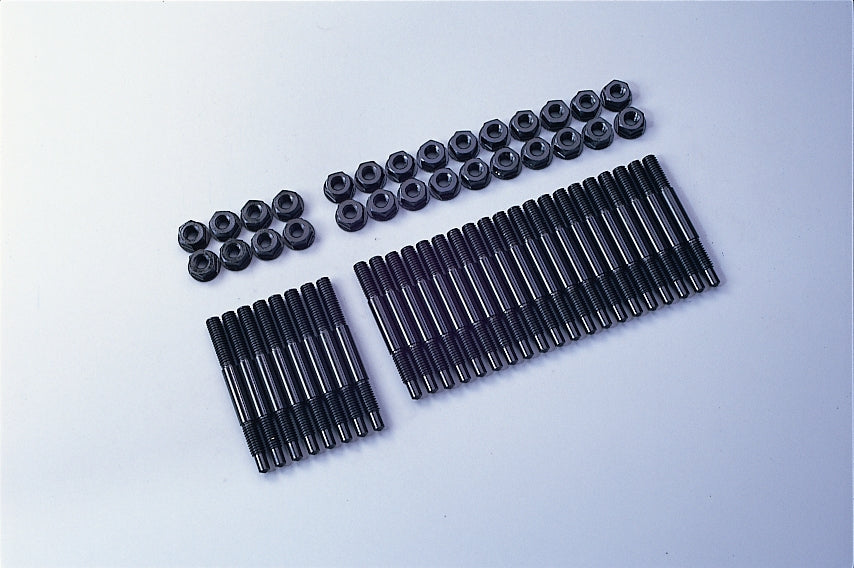When using the high lift profile camshafts for high RPM use the stress loads on the cam caps will be extreme and much higher than what the engineers had originally designed the stock studs for. These bolts are designed and made from Chrome Moly Alloy which will allow you to use with cam lift profiles of up to 12.0mm and for up to 10,000 RPM safely. When using the high lift camshafts engine builders of the past had to depend on the stock bolts. Running the risk of the incorrect strength of the studs, nuts screw holes were always a worry. But now with these Tomei studs the extra strength will allow for pushing your engines performance to new levels for bigger power gains.
PRODUCT INFO
| APPLICATION | P/N | CONTENTS | |
|---|---|---|---|
| RB26DETT | 193016 | ・Bolt×28 ・Nut×28 |
FEATURE / SPEC
| MATERIAL | Bolt/Mut SCM435 |
|---|---|
| Ladder FC Material(Special heat treated) | M6 P1.00 |
●BOLT STRETCH LIMITS
Bolts and screws in general will stretch when placed under stressful conditions. The stock bolts will tend not to return perfectly to its original shape once stretched due to the manufacturing methods used for the original purpose of the bolt design. Tuned engines will go through many procedures which require the bolts to be reused during every step. When having a dummy head installed and getting a bore and hone, when checking for bearing clearances and so on. So when the bolts are removed and torque up repeatedly bolt stretch management will then become difficult to manage the and retain the strict clearances required. The TOMEI Stud bolts are the best choice for high performance precision engines which require the fixed elastic range of the bolt set for repeated use and to maintain performance. The TOMEI Bolts will keep your engine together when needed most.

●ROTATING SURFACE HEAT TREATMENT

●ANGLE TORQUE BOLT TIGHTENING METHOD
An engine cannot be properly built without the use of the angle torque method when tightening certain bolts. It is necessary to utilize a special angle gauge when tightening strengthened studs and connecting rod bolts. Applying torque to the bolts without this specialized tool can lead to immediate or eventual catastrophic failure of the engine assembly.
| Lack of bolting force | Excessive bolting force | |
|---|---|---|
| Head bolt | ・Leaking gas, water, oil caused by lack of the sealing pressure ・The further fall of bolting force, loosening, and engine breakage. |
・ Leaking gas, water, and oil from excessive bolting or failure of sealing pressure. ・Breakage of the cylinder from distortion. ・Poor piston clearance caused by cylinder distortion. |
| Crank bearing cap bolt Conrod bearing cap bolt |
・Worn out of the engine by bad bearing assembly. ・Noise by too much clearance of bearing. ・The further fall of bolting force, loosening, and engine breakage. |
・Worn out of the engine by bad bearing assembly. ・Worn out of the engine by poor clearance of the bearing. |
●TORQUE NUMBERS CANNOT BE TRUSTED
Engine components that require precision accuracy when tightening its bolts cannot be trusted with basic torque figures. This is due to 80~90% of the friction is lost on the surface of the thread and the seat when tightened, with the correct figure being at 10~20% of the torque applied. The surface of the thread and the seat depends on the roughness of each surface and the lubrication state, so that no matter how accurate the torque specs are specified it cannot be trusted.



